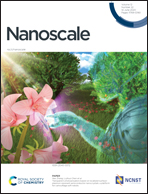Interaction of vascular endothelial growth factor and heparin quantified by single molecule force spectroscopy†
Abstract
Heparin, as an effective anticoagulant, has been increasingly used in clinical practice, but the binding characteristics and influence of exogenous heparin on heparin-affinity proteins in the body are still unclear. Vascular endothelial growth factor A (VEGF-A) is a kind of protein with heparin affinity involved in the pathogenesis and progression of many angiogenesis-dependent diseases including cancer. As an important step in the angiogenesis-related cascade, it is necessary to clarify the interaction between VEGF165 (the major form of VEGF-A) and heparin. In this work, we investigated this interaction based on single molecule force spectroscopy (SMFS) and molecular dynamics (MD) simulation. From the SMFS study, binding forces between VEGF165 and heparin at different loading rates were quantified under near-physiological conditions. Meanwhile, the kinetic and thermodynamic parameters of the VEGF165/heparin complex dissociation process were also obtained. Results of MD simulation visually displayed the most likely binding conformation of VEGF165/heparin* complex, indicating that hydrogen bonding and hydrophobic interaction play a positive role in the binding between the two molecules. This work provides a new insight into the binding between VEGF165 and heparin and offers a research framework to study the interaction between heparin and multiple heparin affinity proteins, which is helpful for guiding the safe application of heparin in the clinic.



 Please wait while we load your content...
Please wait while we load your content...